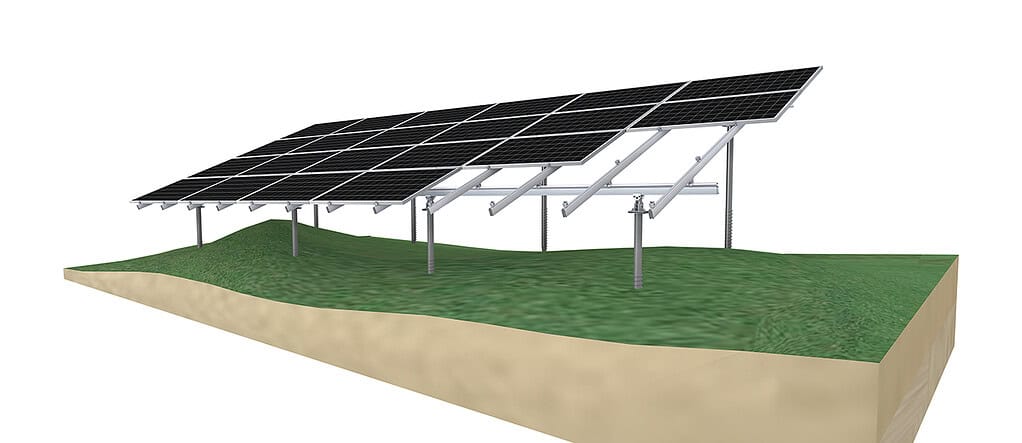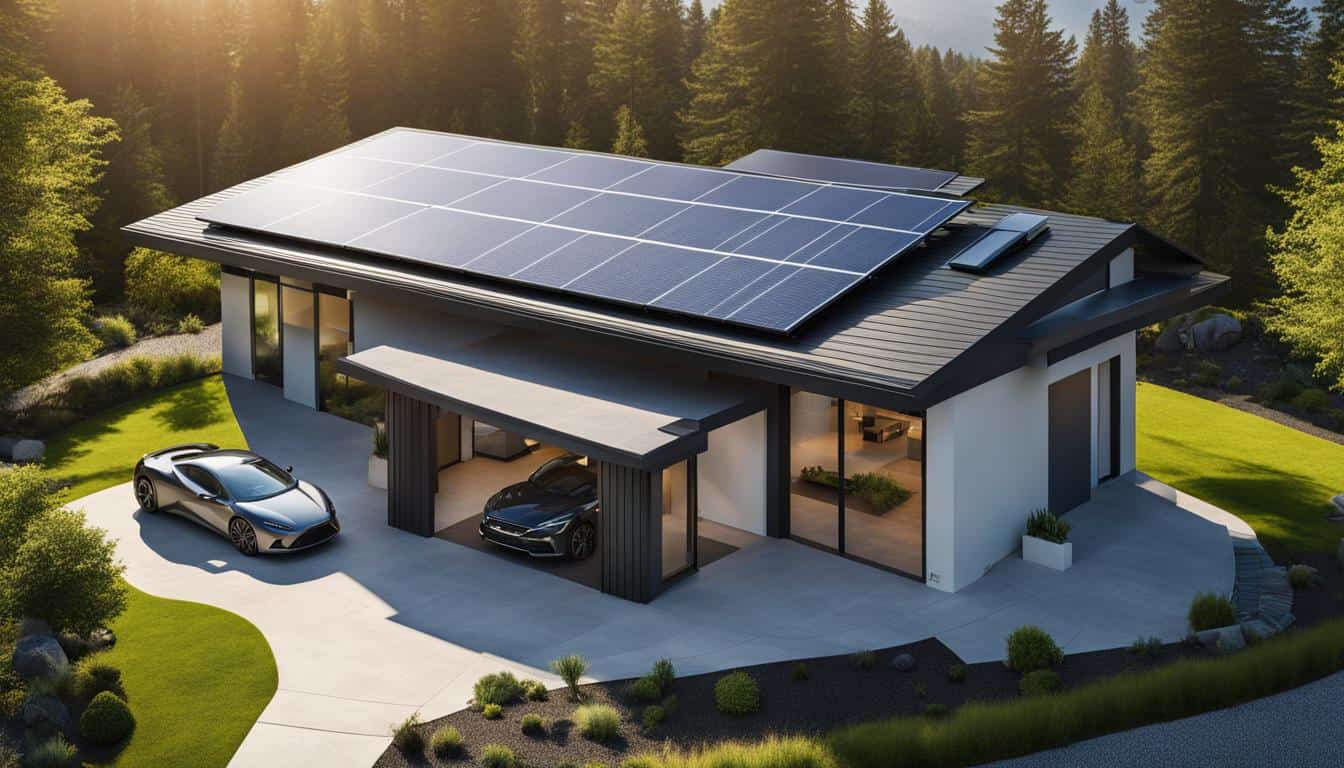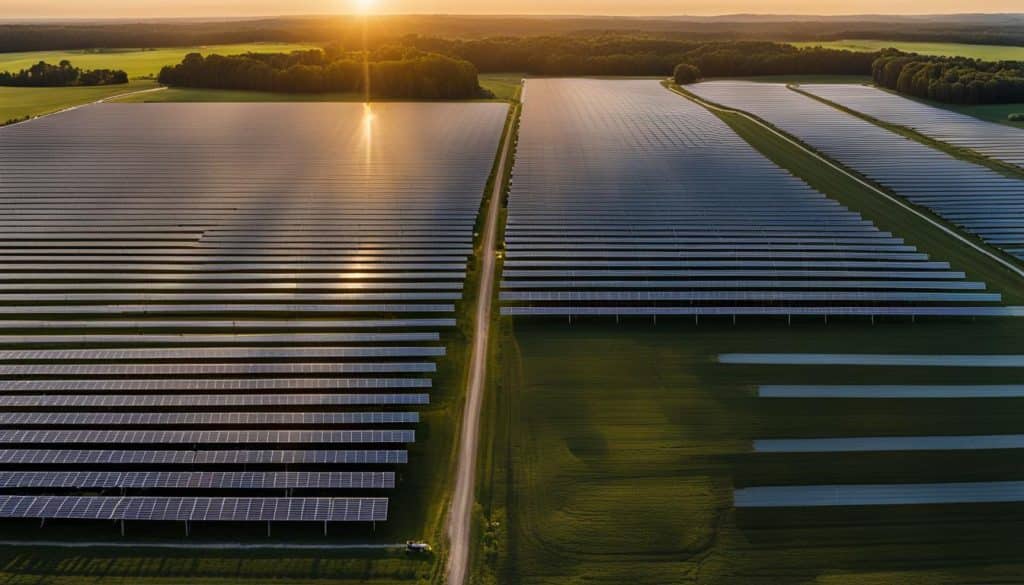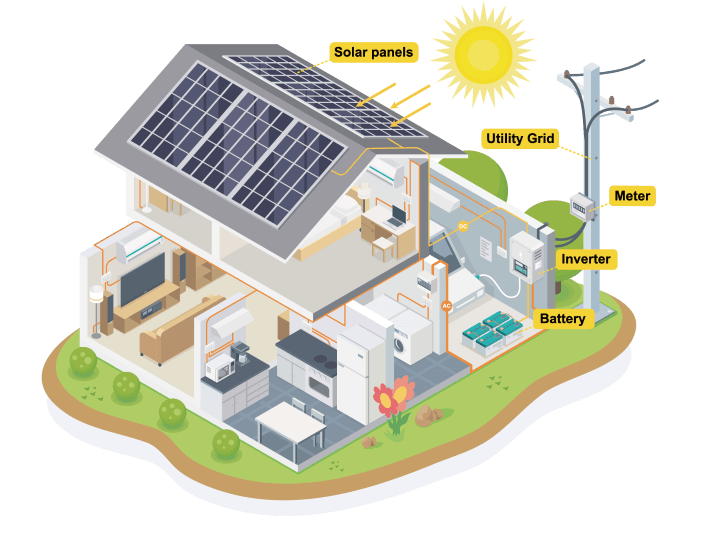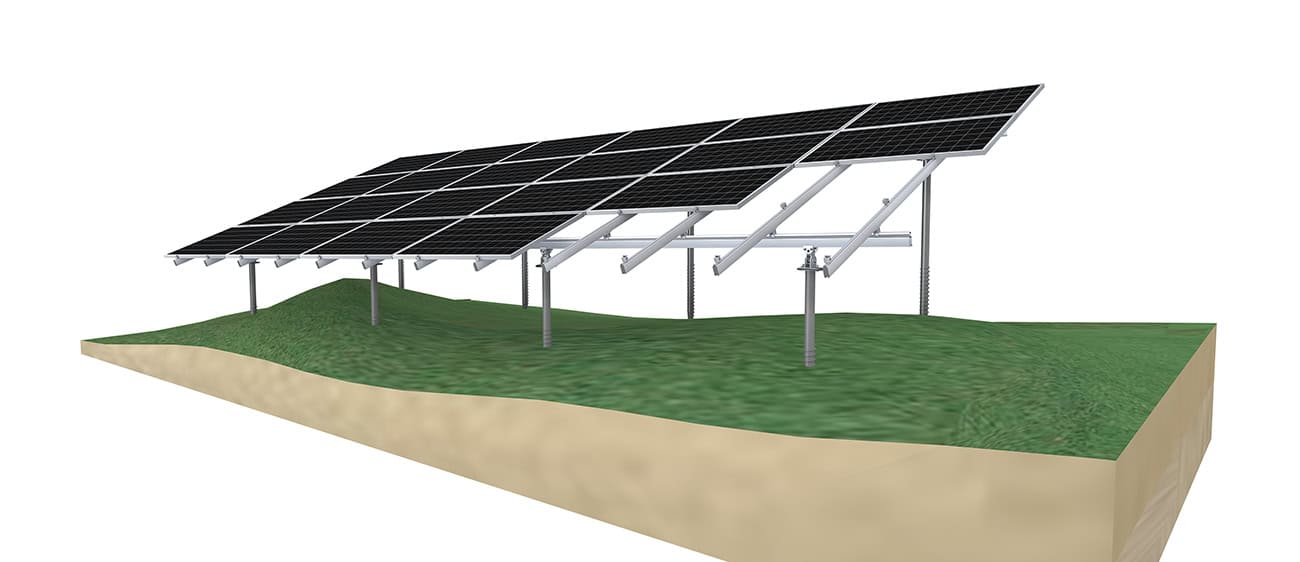Inhaltsübersicht
Einführung
Die Nutzung der Sonnenenergie durch Fotovoltaikmodule ist ein Eckpfeiler der modernen Bewegung für erneuerbare Energien. Freiflächen-Solaranlagen sind ein zentraler Bestandteil dieser Bewegung, da sie die Grundlage für den effizienten Betrieb der Solarzellen bilden. Diese Systeme sind der Schlüssel für alle, die Freiflächen in eine energieerzeugende Anlage umwandeln wollen.
Ein robustes Gestellsystem für die Bodenmontage von Solarmodulen erfüllt mehr als nur die Aufgabe, Solarmodule zu befestigen. Es ist ein wesentlicher Faktor für die Gesamtleistung und Langlebigkeit der Solarinvestition. Um das richtige System auszuwählen, muss man nicht nur die Mechanik von Solargestellen verstehen, sondern auch die spezifischen Umwelt- und Gesetzesanforderungen des Installationsortes.
Freiflächen-Solarsysteme bieten Vielseitigkeit und Effizienz, was sie zu einer beliebten Wahl für eine breite Palette von Anwendungen macht. Ganz gleich, ob Sie als Hausbesitzer Ihren ökologischen Fußabdruck verringern oder als Unternehmen erneuerbare Energien nutzen möchten, das richtige Freiflächen-Solarregalsystem kann Ihr Leben verändern.
Arten von bodenmontierten Solarrackingsystemen
Standard Bodenhalterungen
Standard-Bodenbefestigungen verwenden einen einfachen Rahmen, um Solarmodule in einem festen Winkel zu halten. Diese Systeme bestehen in der Regel aus einem Metallrahmen, der auf einem Betonfundament oder in der Erde verankert ist. Die Paneele werden je nach geografischen und klimatischen Bedingungen in einem bestimmten Winkel aufgestellt, um die Sonneneinstrahlung zu maximieren.
Einpolige Halterungen
Masthalterungen heben die Paneele höher vom Boden ab und können mehrere Paneele auf einem einzigen Mast tragen. Sie sind besonders vorteilhaft in Gegenden mit unebenem Gelände oder dort, wo eine größere Höhe erforderlich ist, um die Sonneneinstrahlung zu optimieren. Diese Halterungen können fest angebracht oder so konstruiert sein, dass sie manuell verstellt werden können, um die Neigung für eine saisonale Optimierung zu ändern.
Manuell verstellbare/Neigungshalterungen
Mit verstellbaren oder neigbaren Halterungen kann der Winkel der Solarmodule in regelmäßigen Abständen verändert werden, um die Effizienz der Module während des ganzen Jahres zu maximieren. Sie sind zwar aufgrund der beweglichen Teile wartungsintensiver, können aber die Energieausbeute der Solaranlage erheblich steigern. Dies gilt jedoch nur für kleine Projekte, da die manuelle Arbeit sonst sehr aufwändig sein kann.
Verfolgungssysteme
Nachführsysteme sind die fortschrittlichste Art von Bodenmontagegestellen. Diese dynamischen Systeme folgen aktiv dem Weg der Sonne über den Himmel und stellen sicher, dass die Module den optimalen Winkel einhalten, um das meiste Sonnenlicht während des Tages einzufangen. Einachsige Nachführsysteme richten sich auf einer Achse aus und folgen in der Regel der Sonne von Osten nach Westen, während zweiachsige Nachführsysteme sich auch an die jahreszeitliche Höhe der Sonne anpassen.
Jede Art von Freiflächen-Solarmontagesystem bietet einzigartige Vorteile und ist so konzipiert, dass sie spezifische Standortanforderungen und Leistungsziele erfüllt. Die Wahl zwischen ihnen hängt von mehreren Faktoren ab, darunter der Installationsort, das Budget und der gewünschte Wirkungsgrad der Solaranlage.
Vor- und Nachteile der verschiedenen Materialien

Bei der Auswahl von Materialien für Solarmodulregalsysteme stehen in der Regel drei Materialien zur Auswahl: Aluminium, verzinkter Stahl und Zn-Al-Mg-beschichteter Stahl, der sich immer größerer Beliebtheit erfreut. Jedes Material hat seine eigenen Eigenschaften, die je nach Projektanforderungen, Umweltbedingungen und Budgetüberlegungen die Entscheidung beeinflussen können.
Hier sind die Informationen in Form einer vergleichenden Tabelle dargestellt:
| Material | Profis | Nachteile |
|---|---|---|
| Aluminium | - Ausgezeichnete Korrosionsbeständigkeit - Leichtes Gewicht - Hochgradig recycelbar | - Geringere Festigkeit im Vergleich zu Stahl - In der Regel teurer als Stahl |
| Verzinkter Stahl | - Hohe Zugfestigkeit und Haltbarkeit, geeignet für Bereiche mit hoher Belastung - Kostengünstiger als Aluminium | - Korrosionsbeständigkeit kann sich verschlechtern - Schwerer, höhere Transportkosten und höherer Installationsaufwand |
| Zn-Al-Mg-beschichteter Stahl (Magnelis) | - Hervorragende Korrosionsbeständigkeit mit selbstheilenden Eigenschaften - Vielseitig in verschiedenen Umgebungen | - Weniger Verfügbarkeit - Relativ neu auf dem Solarmontagemarkt |
Überlegungen für bodenmontierte Solarprojekte
Standortauswahl und -analyse
Die Wahl des richtigen Standorts für ein Bodensolarprojekt ist entscheidend. Der Standort sollte über eine ausreichende Sonneneinstrahlung verfügen und möglichst wenig Schatten durch Bäume, Gebäude oder andere Hindernisse bieten. Eine Analyse der Topografie des Standorts kann die beste Ausrichtung und Positionierung für die Solarmodule bestimmen, um eine maximale Absorption des Sonnenlichts zu gewährleisten.
Zusammensetzung des Bodens und Auswirkungen
Die Art des Bodens kann die Wahl des Fundaments für das Regalsystem erheblich beeinflussen. Sandige, lehmige oder tonhaltige Böden erfordern jeweils unterschiedliche Verankerungsmethoden, um die Stabilität zu gewährleisten. Ein geotechnisches Gutachten kann Aufschluss über die Tragfähigkeit des Bodens geben und bei der Auswahl des geeigneten Fundaments helfen, sei es ein Betonfundament, Rammpfähle oder Bodenschrauben.
Bedenken hinsichtlich Sonneneinstrahlung und Beschattung
Die Bewertung des Solarpotenzials des Standorts ist von wesentlicher Bedeutung. Dazu gehört es, den Verlauf der Sonne über den Himmel zu verschiedenen Jahreszeiten zu kennen und mögliche Abschattungsprobleme zu erkennen. Tools wie Solar-Pathfinder-Geräte können bei diesen Beurteilungen helfen und sicherstellen, dass die Auslegung des Systems für eine ungehinderte Sonneneinstrahlung optimiert ist.
Lokale Raumordnungsgesetze und Genehmigungen
Vor der Installation müssen Sie sich unbedingt mit den örtlichen Bebauungsvorschriften und Bauvorschriften vertraut machen und diese einhalten. Diese Vorschriften können das Design und die Platzierung des Systems beeinflussen. Darüber hinaus ist die Einholung der erforderlichen Genehmigungen ein entscheidender Schritt, der frühzeitig im Planungsprozess berücksichtigt werden muss, um die Einhaltung der Gesetze zu gewährleisten und Verzögerungen zu vermeiden.
Jede dieser Überlegungen spielt eine wichtige Rolle bei der Planung und dem Erfolg einer Freiflächen-Solaranlage. Gründliche Vorbereitung und Sorgfalt in diesen Bereichen können zu einem reibungslosen Installationsprozess und einer effizienteren und zuverlässigeren Solaranlage führen.
Die Zukunft der bodenmontierten Regalsysteme
Die Solarbranche befindet sich auf einem ständigen Weg der Innovation, wobei sich die Forschung auf die Entwicklung effizienterer und kostengünstigerer Montagelösungen konzentriert. Zu den Fortschritten gehören leichtere und stärkere Materialien, modulare Konstruktionen, die die Installation vereinfachen, und intelligente Systeme, die die Umgebungsbedingungen überwachen und sich an sie anpassen können, um eine optimale Leistung zu erzielen.
Neue Werkstoffe wie Hochleistungsverbundwerkstoffe, Zn-Al-Mg-beschichteter Stahl oder fortschrittliche Legierungen bieten das Potenzial für verbesserte Haltbarkeit und geringeres Gewicht.
Bodenmontagesysteme für Solarmodule werden beim Ausbau der Solarenergie eine immer wichtigere Rolle spielen. Sie sind besonders wichtig für Solarparks und in Regionen, in denen Dachanlagen nicht machbar sind. In dem Maße, wie sich die Solartechnologie in den globalen Energiesystemen durchsetzt, werden sich auch die Bodenbefestigungssysteme weiterentwickeln und sich immer besser an verschiedene Umgebungen anpassen und mit anderen Formen der Infrastruktur für erneuerbare Energien integrieren lassen.
Die Zukunft der Bodenmontagetechnik ist vielversprechend und hat das Potenzial, die Kosten weiter zu senken und die Anpassungsfähigkeit und Effizienz der Solarstromerzeugung zu verbessern. Dies wird entscheidend dazu beitragen, die Verbreitung der Solarenergie auf der ganzen Welt zu beschleunigen.

